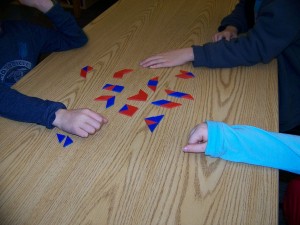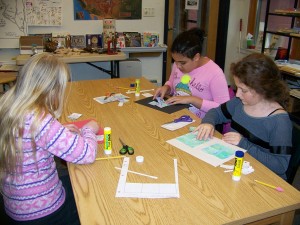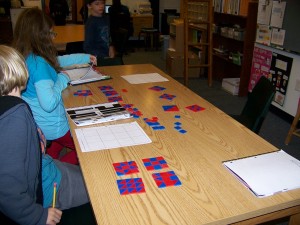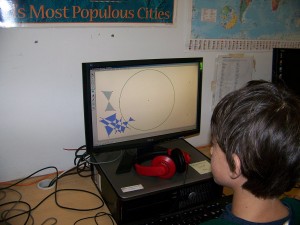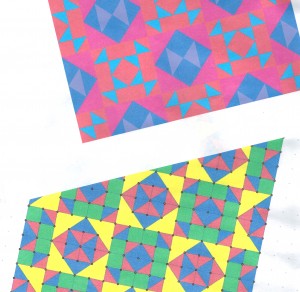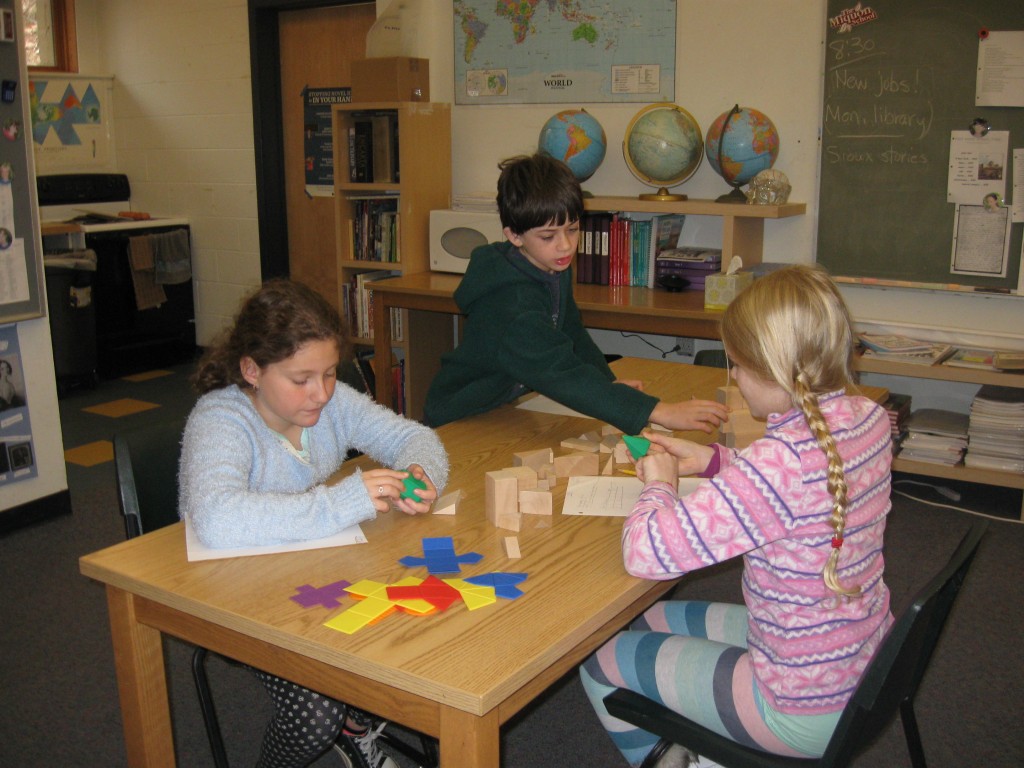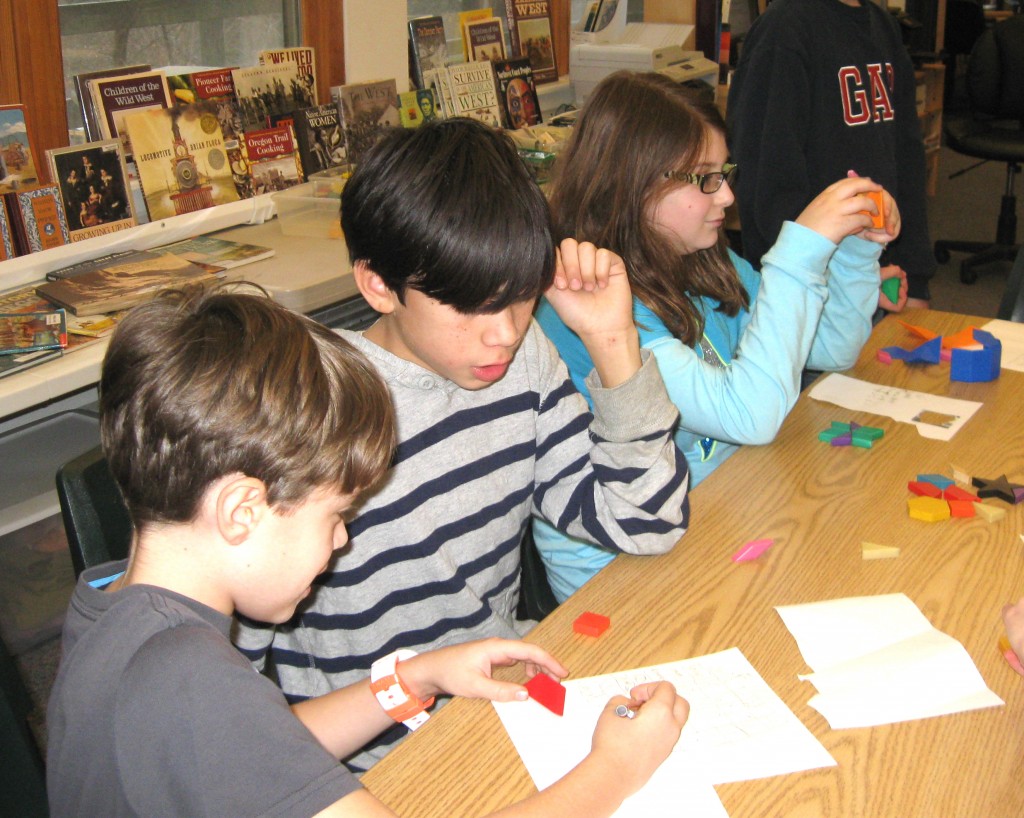Math: After conference week, we decided to take a break from our small instructional groups to do math projects in our home classrooms with our entire class. It allow students to work with all of their classmates and engage in projects that can consolidate prior learning while adding some new skills and concepts. Our class has embarked on a geometry unit, while Diane and Jeri’s is learning about statistics through (of course) baseball.
We started with plastic quilt tiles — 2 shapes, 2 colors. How many different ways could 3 triangles be combined (with side fully touching another)? What about 4 triangles? What can we create with squares and triangles in a square whose area is equivalent to nine square tiles? We also drew designs on large dot paper, again using a square of 9 units, copied those designs 8 times, and then played with them in groups of 4, seeing how rotations and combinations would bring out new shapes.
Then we went on to creating symmetrical quilt designs, partly because quilt-making was a traditional activity during the time of our westward journey. We used a book of patterns called Quilt Design Masters to get started. Students were paired, given the same pattern for the two of them, and asked to color it (crossing the drawn boundaries) to create a new design. When the papers came back to school the next day, students were pleased and surprised to see the different ways that the same basic pattern could be interpreted to create a new design. We also started working with our Geometer’s Sketchpad software. Students learned about many of the tools for construction, created a basic quilt block, and then reflected it several times to build a larger quilt. Angles, symmetry, and transformation terms (such as reflect and rotate) came into our discussions and expanded the students’ skills and vocabulary.
Finally, we took our Sketchpad exploration to a dynamic level when students learned how to create animated kaleidoscopes. Students are able to save their sketches on their Google drives, but they would need the program to run them at home. (Sketchpad is available as a 1-year license for students for $9.96 — there is also a permanent license available for considerably more money. Information can be found here. This is an excellent program that creates an environment for invention and discovery. We will use it in class many times this year.)
After spending a lot of time within 2 dimensions, we added a third dimension when we constructed and learned about polyhedra. Key vocabulary terms were prism, vertex, edge, and face. We worked with some solids and some plastic foldable nets first. Then students cut and assembled paper patterns and recorded the number of vertices, faces, and edges. Was there a relationship? It turned out that there was.
The rule emerged as FACES plus VERTICES minus 2 = EDGES. And it worked every time, even when we started exploring Pattern Tiles and Penta Blox (which are like pattern tiles but based on 5 instead of 6 — invented by Miquon parent Sheldon Berman many years ago).
After Ferguson . . .
As Julia’s recent letter said, we have been working on many things relating to social justice (including Native Americans, through our westward expansion unit, and also — of course — the recent deaths of unarmed black men and a boy with a toy gun at the hands of police). We have talked about the need for all of us to be informed and upstanding. We also want to make sure that our children understand that the police are not all racist, needlessly violent, or untrustworthy.
One of the things we are still exploring in the classroom is an “infographic” from the Christian Science Monitor which shows statistics relating to income, employment, education, incarceration and more for several different ethnicities relating to income, employment, education, incarceration and more. The link to it is here. We strongly suggest that you spend some time at home looking at it with your child and discussing your response to it. Among other things, many of the things it presents are unfamiliar to your child, including vocabulary. It’s a provocative resource for learning more about the world we live in.
To be continued later this week . . . Check back for part two.

